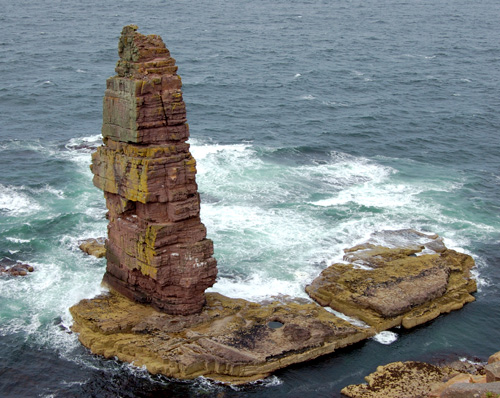A' Chailleach am Bodach
Island in Sutherland
Scotland
A' Chailleach am Bodach

A' Chailleach am Bodach is a prominent mountain located in Sutherland, a county in the Highland region of Scotland. It is part of the Northwest Highlands, a rugged and remote area known for its dramatic landscapes and challenging hiking trails. A' Chailleach am Bodach, which translates to "The Old Woman and The Old Man" in Gaelic, is a fitting name for this mountain as it consists of two distinct peaks.
The mountain stands at an impressive height of 997 meters (3,271 feet) and offers breathtaking panoramic views of the surrounding wilderness. Its remote location and steep slopes make it a popular destination for experienced hikers and mountaineers seeking a challenging adventure.
The terrain of A' Chailleach am Bodach is characterized by rocky ridges, scree slopes, and steep gullies, providing a thrilling yet demanding climb. The ascent to the summit requires proper navigation skills and equipment, as the weather conditions can change rapidly and visibility can be limited.
Despite its challenging nature, A' Chailleach am Bodach attracts outdoor enthusiasts who are drawn to the solitude and beauty of the Scottish Highlands. The mountain is often included in multi-day hiking itineraries, with hikers camping in the valley below or in nearby bothies for a truly immersive wilderness experience.
A' Chailleach am Bodach is not only a physical challenge but also a place of natural beauty and tranquility, offering a glimpse into the untamed wilderness of Sutherland.
If you have any feedback on the listing, please let us know in the comments section below.
A' Chailleach am Bodach Images
Images are sourced within 2km of 58.614789/-5.0156186 or Grid Reference NC2473. Thanks to Geograph Open Source API. All images are credited.



A' Chailleach am Bodach is located at Grid Ref: NC2473 (Lat: 58.614789, Lng: -5.0156186)
Unitary Authority: Highland
Police Authority: Highlands and Islands
What 3 Words
///caressing.opposing.hound. Near Oldshoremore, Highland
Nearby Locations
Related Wikis
Cape Wrath
Cape Wrath (Scottish Gaelic: Am Parbh, known as An Carbh in Lewis) is a cape in the Durness parish of the county of Sutherland in the Highlands of Scotland...
Cape Wrath Lighthouse
Cape Wrath Lighthouse at Cape Wrath was built in 1828 by Robert Stevenson and was manned until 1998, when it was converted to automatic operation by the...
Sandwood Bay
Sandwood Bay (Scottish Gaelic: Bàgh Seannabhad) is a natural bay in Sutherland, on the far north-west coast of mainland Scotland. It is best known for...
Am Buachaille
Am Buachaille is a sea stack, or vertical rock formation composed of Torridonian Sandstone, 1 mile (1.5 kilometres) southwest of Sandwood Bay in the Scottish...
Nearby Amenities
Located within 500m of 58.614789,-5.0156186Have you been to A' Chailleach am Bodach?
Leave your review of A' Chailleach am Bodach below (or comments, questions and feedback).

















